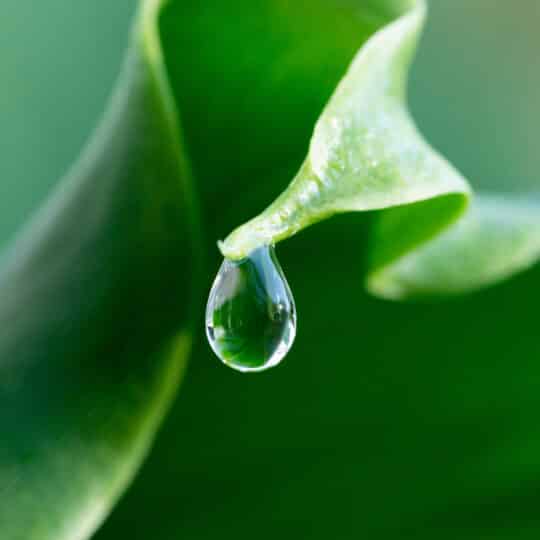What is Plant Guttation
Is it Good or Bad?
Posted
August 15, 2024

While it’s common to see water droplets on the tips of plant leaves, it’s not always what you think it is. Plant guttation looks a lot like dew, especially since it’s noticeable in the morning, but it’s another way for plants to regulate internal processes. Learn more about why it happens and if it’s something to worry about.
What is Plant Guttation?
When a plant’s soil is moist and the leaves can’t evaporate the water fast enough, you may see tiny droplets form around the edges or down the stem. This is guttation.
Like dew, the droplets form overnight or in the early morning. Unlike dew—which is caused by condensation of moisture in the air—guttation is the excess water being pushed out through hydathodes in the leaves. Here’s why this happens:
- When the tiny openings on the leaf surface are closed at night, plants continue to absorb water from the soil. This causes an increase in water pressure within the roots.
- To relieve this pressure, the plant forces the excess water out through the hydathodes. These are the droplets you see along the leaf edges.
- These droplets often contain various dissolved minerals and sugars, making them slightly sticky.
Even though the guttation process is natural, it can also be a sign of plant distress. This sticky substance it excretes can also become a cause for concern. But there’s a way to tell whether or not you have a problem.
Is Guttation Good or Bad for Plants?
Whether you notice the sticky leaves or droplets first, evaluate the rest of your plant to determine whether or not it may need treatment.
- It’s more common in certain plants. Typically plants with large leaves or those in the grass family are more prone to go through guttation.
- Does the plant look healthy? Then it could simply be a sign the plant is actively managing water pressure.
- If the soil is constantly moist, you could be overwatering. Wait until the soil is dry before watering again, or else the roots may rot.
- Are the leaves yellowing and wilting? This is another sign of overwatering and nutrient loss. Test the soil to determine whether it needs fertilizing.
- Do you notice any pests? The sticky droplets can create the ideal conditions for fungi growth and pests. Remove any infected leaves and treat the plant for the specific problem.
If the plant is showing other signs of distress, disease, or pests, there are ways to help manage guttation to improve plant health.
How to Manage Guttation
If you notice plant guttation is accompanied by other problematic signs, there are additional steps you can take the situation back under control.
- Improve drainage. Even if you’ve been limiting the amount you water, make sure the plant’s pot or the garden soil has good drainage to help prevent excessive root pressure.
- Improve air circulation. Try not to overcrowd plants indoors or out. This can help the droplets evaporate before attracting bacteria and pests.
- Professional evaluation. If you’ve done what you can to prevent overwatering, improve drainage, and increase air circulation and you still notice excess guttation and wilting leaves, have your plants evaluated by a plant healthcare specialists for more options.
While plant guttation is a normal process, it can get out of control under certain conditions. With the right attention and care, you can help prevent problems and keep your plants healthy.